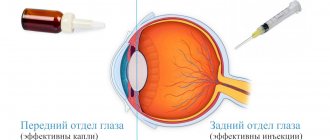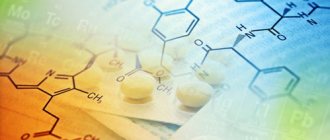Parenteral nutrition drugs are a group of drugs that are administered intravenously and replace traditional nutrition in special groups of patients.
The main components of food that provide the basic nutritional needs of the human body include proteins, fats and carbohydrates. In addition, for normal functioning, the body must receive macro- and microelements (sodium, potassium, calcium, magnesium, iron, phosphorus, iodine, sulfur, etc.), as well as vitamins.
In cases where traditional (enteral) nutrition is either complicated or impossible, parenteral nutrition is used. Typically, parenteral nutrition preparations are used for pathologies of the gastrointestinal tract, which are accompanied by difficulties in digesting and assimilating food.
Parenteral nutrition can be partial or complete. Partial parenteral nutrition is used as an adjuvant supplement to traditional meals. Preparations of carbohydrates (glucose) and amino acids are mainly used for partial parenteral nutrition. Total parenteral nutrition provides 100% of the body's nutritional needs and almost completely replaces traditional nutrition.
Parenteral nutrition preparations are simple products of digestion of the main components of food, in the form in which they are usually absorbed in the intestines and absorbed by the human body: instead of proteins, parenteral nutrition preparations contain amino acids, instead of complex fats and carbohydrates - triglycerides and glucose, respectively.
Indications for use
Parenteral nutrition preparations are used as a source of energy in cases where traditional nutrition is impossible or significantly limited - mainly in patients with dysfunction of the gastrointestinal tract due to ulcerative colitis, intestinal obstruction, short bowel syndrome after removal of part of the intestine (for example, with a tumor , intestinal infarction).
Parenteral nutrition preparations are also used in premature infants, infants with congenital defects and gastrointestinal abnormalities.
Amino acid preparations are indicated for severe liver failure, hepatic encephalopathy, and hepatic coma.
Glucose is additionally used as a solvent for a number of medications before intravenous drip administration, in case of critical loss of fluid (dehydration), during operations, as well as in various poisonings and critically low levels of glucose in the blood (hypoglycemia).
Checking and storing TPN
The TPN will be delivered to you by parcel. Store it in the refrigerator at 35°F (1.6°C). To make sure you have the correct mixture, do the following:
- Make sure the name and mixture on the package label matches what was prescribed by your healthcare provider. If there is an error, call your healthcare provider.
- Check the expiration date printed on the TPN package. If the formula is expired, call the company that sent it.
to come back to the beginning
Classification of drugs for parenteral nutrition
Parenteral nutrition preparations are classified into:
- amino acids: combination preparations containing L-arginine, L-leucine, L-isoleucine, L-methionine, L-phenylalanine, L-alanine, L-proline, L-valine, L-threonine, L-lysine, glycine, L- histidine, L-serine, N-acetyl-L-tyrosine, L-tryptophan, N-acetyl-L-cysteine, etc.;
- fat emulsions: preparations, soybean oil, medium chain triglycerides, purified egg phospholipids, olive oil, fish oil;
- carbohydrates: glucose;
- combined preparations: amino acids + electrolytes, amino acids + fat emulsions + electrolytes, amino acids + fat emulsions + carbohydrates + electrolytes.
Preparing medications to add to TPN
To add medications to your TPN as needed, follow the steps below.
Some bags have a separator in the middle that separates the mixture from the lipids. If you have it in your package, remove it after adding all the medications.
- Check the label and expiration date of the medicine. Make sure you have the correct medicine and it is not expired (see Figure 3).
Figure 3. Checking the medication label
- Remove the protective cap from the bottle containing the medicine. Without removing the alcohol wipe from the foil package, wipe the top of the bottle with it (see Figure 4). Place the bottle on a sterile surface. Do the same for any medications you will add to your TPN pack.
Figure 4: Cleaning the top of the medication bottle with an alcohol wipe
- Wipe the medication port on the TPN bag with an alcohol wipe (see Figure 5). This is the port where you will inject the medication. It can be located on the outside or inside of the TPN packet.
Figure 5: Cleaning the medication port on a TPN bag with an alcohol wipe
- Open another alcohol pad completely. Place the clean medication port on a new alcohol wipe (see Figure 6).
Figure 6: How to place the medication port on an alcohol pad
- Take the syringe and remove the protective cap (see Figure 7).
Figure 7. How to remove the protective cap from the syringe
- Grasp the round end of the plunger at the base of the syringe and pull it out to the level that corresponds to the dose of medication prescribed by your healthcare provider (see Figure 8).
Figure 8. Pulling the syringe plunger to the mark corresponding to the prescribed dose of medication
- Clean the top of the medication bottle with an alcohol wipe. Hold the syringe in your hand like you would a pen or pencil. Insert the syringe needle into the rubber stopper of the medicine bottle (see Figure 9). Push the plunger to force air into the bottle.
Figure 9. Inserting the syringe into the medicine bottle
- Carefully turn the bottle upside down with the needle inserted into it. Make sure the medicine covers the tip of the needle. Pull the plunger to draw the prescribed amount of medication into the syringe (see Figure 10). Check that the required amount of medicine is drawn into the syringe. Remove the needle and set the bottle aside.
Figure 10. Pulling the plunger to fill the syringe with medication.
- Insert the needle into the medication port on the TPN bag. Inject the medication into the bag (see Figure 11). Once all the medication is in the bag, place the medication port back on the alcohol pad. Place the syringe in a medical needle container.
Figure 11. Drug administration in TPN bag.
- Repeat steps 5 through 9 until all prescribed medications are included in the TPN bag. Use a new syringe for each medicine. Store bottles that you will use more than once in the refrigerator until they run out of medicine or reach the expiration date.
- Gently rock the TPN packet to mix the medication(s) into the mixture. The mixture will turn from clear to yellow. Check for cloudiness or particles. If you notice any discoloration, cloudiness or particles, do not use the bag. Save it and notify your infusion provider's home care provider. Then go back to point 1 and start over.
- Once you have added all your prescribed medications, you can remove the divider in the middle of the TPN bag, if there is one. Gently rock the bag to mix the lipids into the mixture. Check the bag for fat and lipid separation. Do not use the solution if you see fats or lipid separation in it . Instead, return the bag to your infusion company and start over with a new bag.
Figure 12. How to remove the separator installed in the middle of the TPN package
to come back to the beginning
Start of TPN administration
- Hang the TPN bag on the IV pole or hook (see Figure 15). If you are using a portable pump, you do not need an IV pole.
Figure 15. Hanging TPN bag from IV pole.
- Hold the tube end of the TPN bag over the trash can. Squeeze the injection kit chamber 1 time (see Figure 16).
Figure 16: Squeezing the injection kit chamber
- Open the roller clamp so that the solution fills the entire length of the tube, including the filter. The filter is a protective device for trapping air bubbles and any particles from the solution moving through the tube. Make sure there are no air bubbles in the tube.
- When the tube is full, close the roller clamp. Pass the tubing through the infusion pump, following the instructions on the pump.
- Clean the CVC connector at the lumen end with an alcohol wipe.
- Flush the lumen that will be used for infusion with 10 mL of normal saline (see instructions in the section “Disconnecting the TPN Tubing and Flushing the CVC”).
- Remove the protective cap from the TPN tubing (see Figure 17).
Figure 17: Removing the TPN Tube Protective Cap
- Carefully connect the TPN tubing to the CVC lumen (see Figure 18). If your CVC has two or more lumens, try switching between them during your TPN infusion. This will ensure that each lumen is working properly. Do not touch exposed connectors or let them touch anything. If the end of the TPN tubing accidentally touches something, replace the solution set with a new one.
Figure 18. Connecting TPN tubing to the CVC lumen
- To begin TPN administration, open the clamps on the lumen and TPN tubing. Turn on the infusion pump.
to come back to the beginning
Disconnecting the TPN Tube and Flushing the CVC Lumen
The pump will beep when the infusion is complete. Now you need to disconnect the TPN tubing from the CVC and flush the CVC. Your nurse will teach you how to do this and give you all the necessary supplies.
- Prepare everything you need. You will need:
- one 10 ml syringe pre-filled with normal saline (you will need one syringe for each lumen);
- non-sterile gloves;
- alcohol wipes;
- one disinfection cap for each lumen.
- Wash your hands with warm water and soap for at least 20 seconds. Dry them with a clean towel or paper towel.
- Wear non-sterile gloves.
- Turn off the infusion pump.
- Close the clamp on the TPN tube and disconnect the tube from the CVC.
- To release air bubbles from the syringe, gently tap the side of the syringe. As you do this, point the syringe upward. Loosen the cap on the syringe, but do not remove it. Press the plunger of the syringe until the air comes out. Screw the cap back on.
- Take one lumen and open the clamp installed on it.
- If you have a disinfection cap, it should be removed. If you do not have a disinfection cap, wipe the end of the needleless connector with an alcohol wipe for 15 seconds and let it dry for 15 seconds.
- Remove the cap from the syringe. Discard the cap. Make sure the clean end of the needleless connector doesn't touch anything while you do this.
- Carefully insert the saline syringe into the needleless connector and turn it clockwise (to the right) until you feel it is securely attached.
- Start injecting saline solution. If you cannot do this, stop and check that the tubes are not kinked or otherwise blocked. Try injecting saline again. If you still cannot do this, do not apply additional pressure to flush the tube. Remove the syringe, re-clamp the catheter, and call your healthcare provider.
- To flush the catheter, use the push/pause method:
- quickly inject ⅓ of the saline solution;
- take a break;
- repeat;
- inject the remaining ⅓ of the saline solution;
- After the last injection of saline, place a clamp on the catheter.
- Unscrew the syringe from the lumen and discard it.
- Place the disinfection cap on the end of the needleless connector.
- Repeat steps 7–14 for each lumen.
- Place clamps on the gaps.
- Secure the catheter so that you are comfortable.
- Throw away the gloves and wash your hands.
You have finished entering the TPN. Throw all disposable items into the trash.
Your infusion nurse will help you and your caregiver practice these steps until you feel confident. If you have any questions, ask your healthcare provider.
to come back to the beginning
Connecting the Infusion Kit to the TPN Bag
- Remove the protective cap (tab) from the needle port on the TPN bag and place it on the sterile cover. Do not touch the open end or let it touch anything.
- Get a TPN solution injection kit. Hold it with one hand below the sharp end of the needle head and remove the protective cap (see Figure 13).
Figure 13. How to remove the protective cap from the injection kit needle attachment
- Screw the injection kit needle assembly into the needle port of the TPN bag (see Figure 14).
Figure 14. Screwing the injection kit tip into the needle port of the TPN bag.
to come back to the beginning










